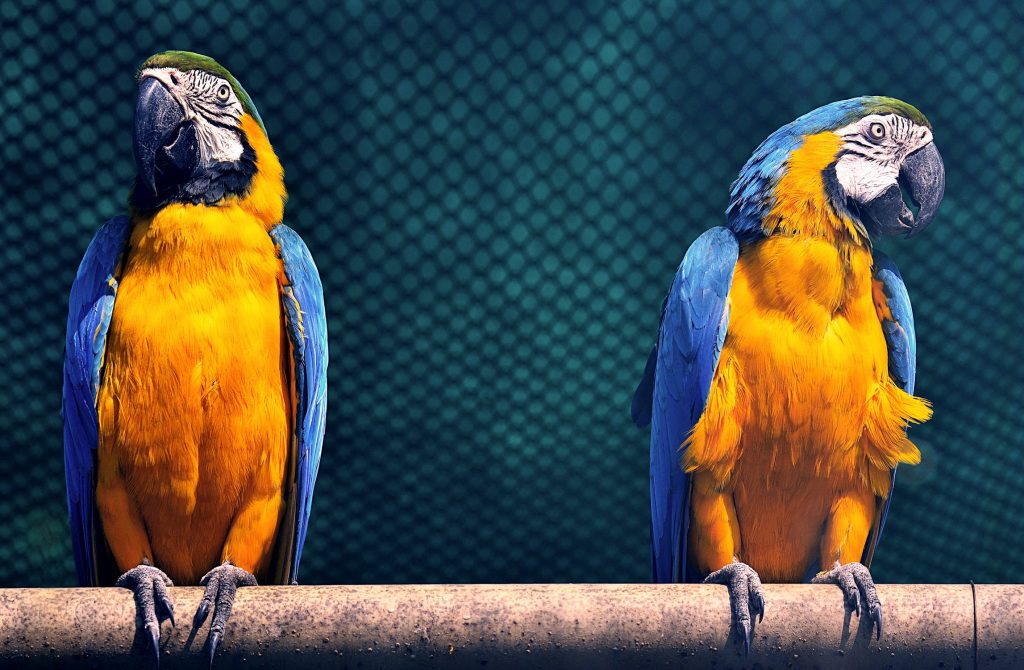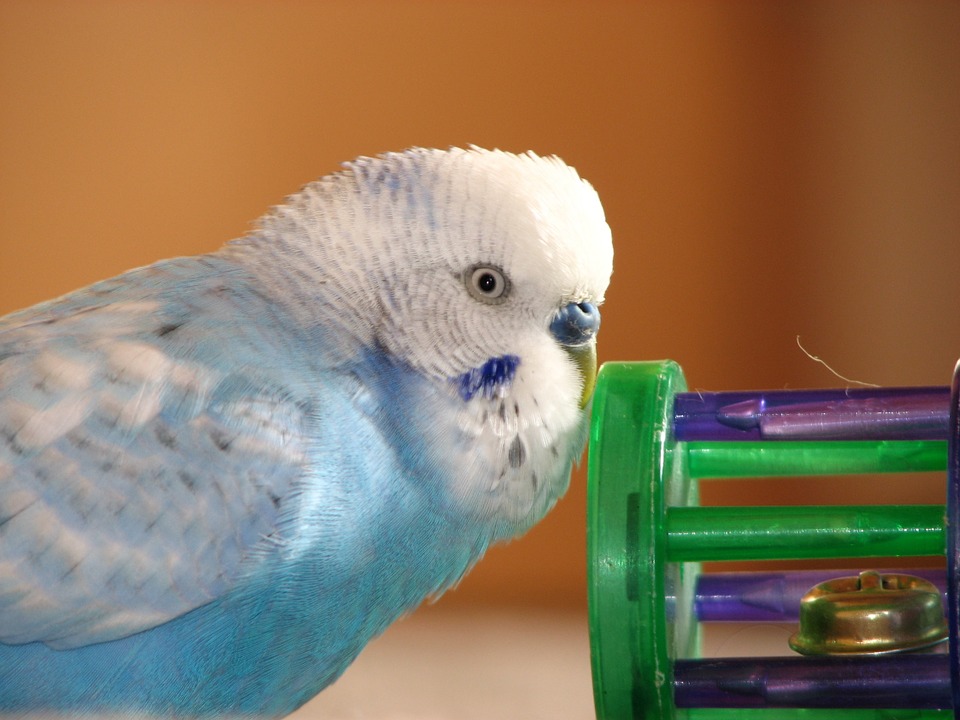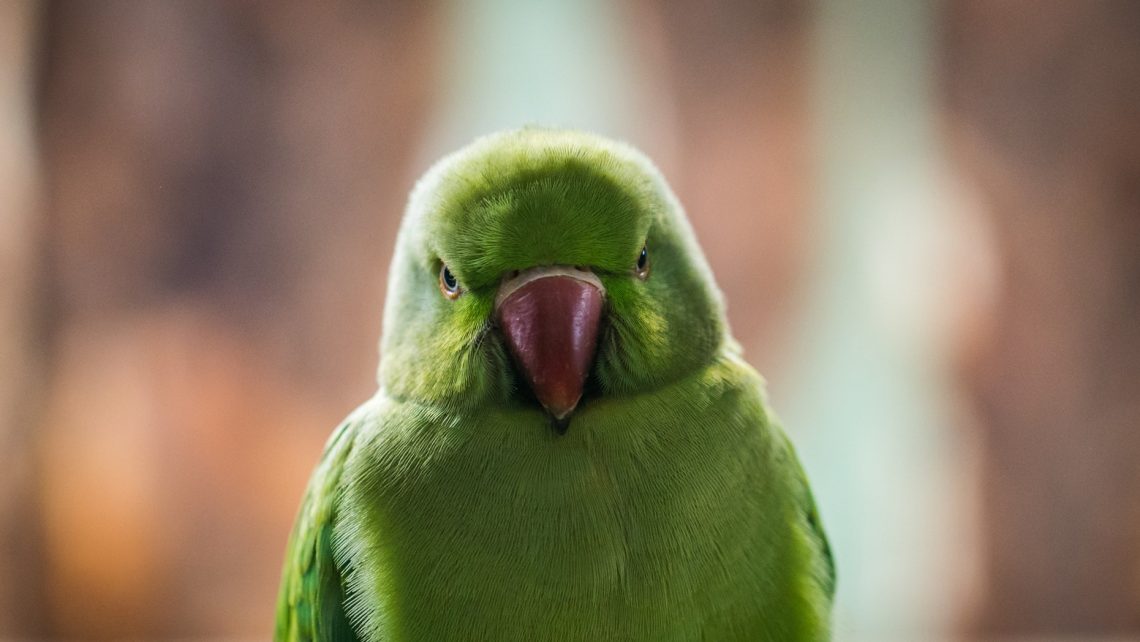While exotic pets have had a popularity rise in recent years, there hasn’t necessarily been an increase in the knowledge of how to take proper care of them. Pet birds are no exception. Many first-time bird owners aren’t ready for just how time consuming and expensive their proper care can be, along with the destruction, screaming and heartbreak that inevitably results with long-term improper care. That’s not to say that these owners aren’t trying their best. There’s a lot of misinformation concerning pet birds out there, and it can be hard to know the best thing to do to guarantee your pet’s health and happiness. Here’s a few common mistakes to avoid making, whether you are an experienced bird owner or you are looking to get your first.
#1 – Nutrition
It’s common to see people feed their pet parrots a diet of seed and pellets, or only seed. Pet stores often market these as complete diets for birds, and it can be easy to believe that nutritionally, birds require little. However, in the wild, most birds we have as pets would live off of mainly vegetation, not seeds. Even for birds that would eat mostly seeds or nuts in the wild, such as budgies or hyacinth macaws, the seeds we offer them in captivity are not the same as the ones they would forage for naturally, and they also do not expend the same amount of energy looking for those seeds, leading to an intake of too many calories. Pelleted diets are, at face value, better than seeds – but still do not complete a parrot’s diet. Parrots need a large part of their diet to be vegetables and fruit. Feeding only pelleted diets or seeds or a mix of the two can lead to obesity and vitamin deficiencies. This doesn’t mean cut out pellets or seeds entirely. In fact, for most birds pelleted diets should make up 50-60% of their diet. Seeds should be a much smaller part, and are sometimes only offered as treats, not as a diet staple. Check to make sure any veggies or fruit you offer are bird-safe, clean, and fresh. Try to offer a variety of textures – besides the nutritional aspects, a great thing about fruits and vegetables in a parrot’s diet is the stimulation they get from different textures of foods.
#2 – Perches

A common sight in a parrot cage is a single smooth wooden dowel for them to stand on. This isn’t appropriate for any bird. Parrots need a variety of textures to stand on – not only for their mental health, but their physical health. Smooth, untextured wooden dowels can lead to health conditions like bumblefoot or other foot disorders. It’s best to have around at least 3-4 different perches in a parrot’s cage, with a different texture for each, if possible.
#3 – Cages
Many bird cages commonly available in pet stores are just far too small for the birds they’re meant to contain. Birds need room to fly, climb, and play inside the cage, regardless of how much time outside of the cage you give them. It’s a common belief that smaller birds are fine in very small cages. This is not true. While they don’t necessarily require the same cage size a macaw does, they should not be subjected to a cramped cage either. Make sure your bird has room for all its toys and perches without being cramped, while still having room to fly within the cage unhindered.
#4 – Toys

It’s surprising the amount of toys even the smallest birds require. Many parrots give their parrots two or three toys and think they will be satisfied. Parrots need many different ways to play within the cage, even if owners are with the bird for much of the day. It’s important to give a bird different toys – hanging toys, foot toys, foraging toys. Try to give them a variety so they can perform different activities – swinging, tossing, shredding. Bird toys don’t always have to be expensive. Many shredding toys don’t require much more than some bird-safe paper. It’s important to switch toys out to keep birds interested, though they may prefer that a favorite toy remains a cage staple.
#5 – Vet Visits
Why take a healthy bird to the vet? Birds are great at hiding illnesses, and should go to the vet at least once a year for a check up to make sure they are in good health. Make sure to go to an avian vet, who will specialize in care for your bird. If your bird exhibits strange behaviors, looks unwell, or otherwise seems out of the norm, be sure to get them checked out by your vet as soon as possible.
#6 – Bigger Means Better
It’s a common belief that only large birds like macaws, African Greys and cockatoos are capable of conversation, intelligence or meaningful interactions. This just isn’t true. Many smaller bird species can learn to talk and whistle, and many common little budgies may actually be more talkative than larger birds, just quieter. Larger bird species are also louder, more destructive, and can cause a lot more damage with their bites. Do your research on the species you want, and don’t take on more than you can handle.
#7 – Messes
It’s easy to think that messes from your bird will be contained inside the birdcage. Don’t be fooled. It’s almost guaranteed that feathers, food, and poop will be all over the room your bird is in and any rooms they frequent. It’s not impossible to manage, but don’t assume your bird will be a mess-free pet.
If you are unsure if you can handle the responsibility of a bird – don’t get one. While they are destructive, loud, messy, and demanding, they are also highly intelligent, loving, playful, and rewarding to keep. As long as you keep up to date on what your bird requires, they can live a long and rewarding life with you.
Author: Patrick Kuklinski is an American Federation of Aviculture – certified Aviculturist who specializes in pet birds.
The PETABLE App isn’t just for cats and dogs. Bird owners can also keep all their pets’ info handy, at all times. Click to download:



I got a Aztec Conure a few years ago and he’s doing great. I did a lot of research before I purchased him so I knew what I was in for. One issue I had problems with was vegitation. He wouldn’t touch anything no matter what. Then I tried a new approach. I took Kale and a few other leafy greans and combined them with a banana and made a smoothie, which he loves. So he’s getting his vitamin A.
I dearly love my birds, but they both came from owners who didn’t know how to care for them. It has taken years and lots of work to get them to what they should be, happy and healthy birds.
what if my mom says that she doesn’t want to bring my bird to go to the vet because she thinks that it isn’ t necessary? what do I say to her? How do I tell her that it is important?